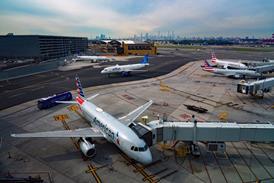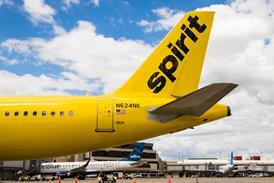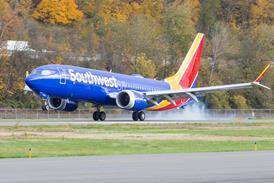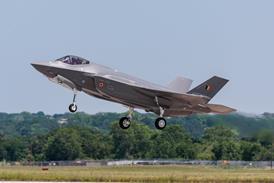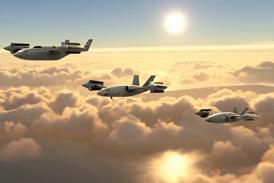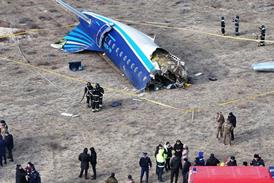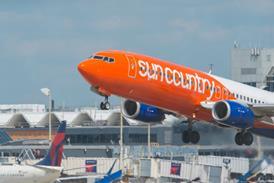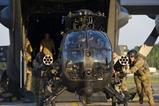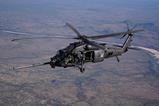Maxar, a provider of commercial satellite imagery, has developed a visual navigation solution for aircraft operating in GPS-denied environments.
The Colorado-based firm is best known for its private constellation of satellites that make high-resolution imagery available to commercial customers. Such capacities were once available only to the intelligence agencies and defence forces of wealthy national governments.
Amid rising concern about the vulnerability of GPS navigation signals to jamming — based on observations from military operations in Ukraine and the Middle East — Maxar has developed an airborne navigation tool that does not rely on GPS.
“This is becoming a key requirement,” says Peter Wilczynski, chief product officer at Maxar.
The Pentagon calls such technologies Alternative Position, Navigation, Time – Alt-PNT or APNT in shorthand. The technology is being looked at to back up GPS for precision navigation on uncrewed aircraft, guided munitions and even manned aircraft.
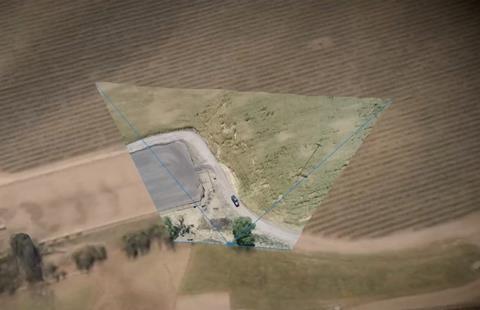
Maxar’s approach to Alt-PNT is something called visual navigation, where an algorithm visually compares the terrain an aircraft is overflying to image data on file. The company’s solution, which it calls Raptor, makes use of Maxar’s extensive database of high-resolution terrain imagery.
Real-time video feed captured by the aircraft is compared to imagery on file covering the area around the expected flight route. Those files contain embedded geospatial coordinates, which allow the aircraft to verify its location.
“We really had to do a lot of work across different biomes and across different seasons,” says Wilczynski.
Specific map data required for a mission can be uploaded during pre-flight operations, alleviating the need for carrying a massive dataset covering the entire globe. This also allows for the use of up-to-date imagery, addressing any recent changes to the terrain, such as deforestation.
Wilczynski says Maxar’s ability to constantly update its imagery database using its company-owned satellite network is a “critical part” of its Alt-PNT offering. Multiple satellites photograph terrain from different angles, building a three-dimensional image file that provides greater navigational accuracy compared to a standard two-dimensional photo.
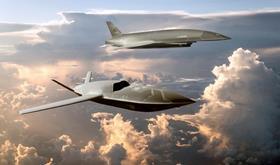
The company also wanted to ensure the Raptor navigation system can function without a specialised camera system, using cameras already installed on uncrewed aircraft. The goal was to develop a technology that is “platform agnostic”, in the same way that GPS has been adapted to operate on a range of vehicles and systems.
“It can’t be a vendor-specific solution,” Wilczynski notes. “We don’t need additional hardware; we can use the existing forward-looking camera.”
Maxar has already run flight tests with Raptor using both unmanned quadcopters made by French manufacturer Parrot and piloted Cessna turboprops. Wilczynski expects Raptor will be generally available to both military and commercial customers by the end of this year.
On the military side, Maxar is targeting uncrewed aircraft manufacturers as likely early adopters of the technology. Companies such as General Atomics Aeronautical Systems and Anduril, which are designing the US Air Force’s first generation of autonomous fighter jets, may soon be required to include Alt-PNT capability on their frontline combat aircraft.
Wilczynski says Maxar hopes to offer its navigation product to such airframers in an easily adaptable package.
“They need to figure out how to either retrofit their systems or update their systems to address this new set of requirements,” he notes.
Affirming what other developers of alternative navigation solutions have told FlightGlobal, Wilczynski says a product like Raptor is meant to supplement GPS, rather than replace it. An aircraft could launch its sortie using GPS guidance, but transition to visual navigation if that signal is interrupted by jamming or disruption due to terrain, in the case of smaller UAVs flying close to the surface.
One environment where visual navigation is unlikely to be effective is over large bodies of water, which provide little to no point of reference for a visual analysis algorithm.
That means military planners focused on maritime operations will likely have to search out some other Alt-PNT solution for regions like the Indo-Pacific and North Atlantic.


